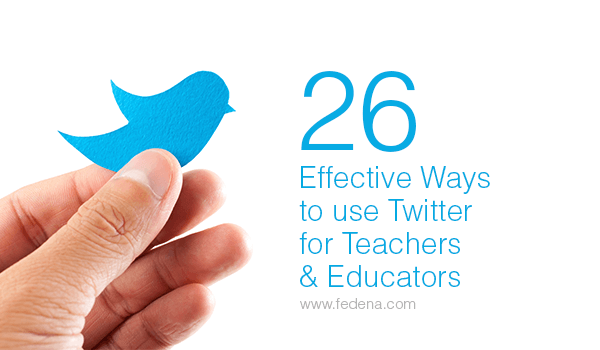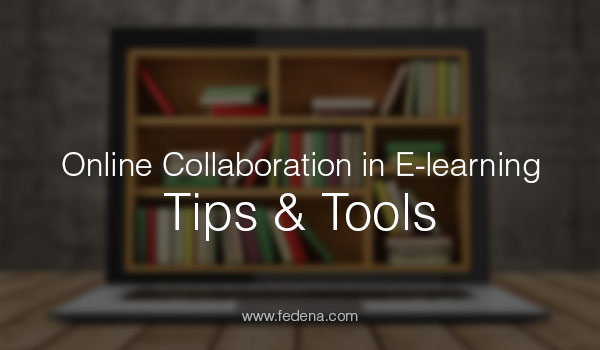
Managing a group of people for a project is not an easy task to do. Especially when the group of people are students and they have to have good communication and collaboration among themselves to carry out the project properly. Using a software or tool is a smart idea. But students won’t be comfortable with using a tool that’s beyond the reach of their pocket. There are some names that can be good task management tools along with keeping the pricing factor favorable to students as well. Read below to know more.
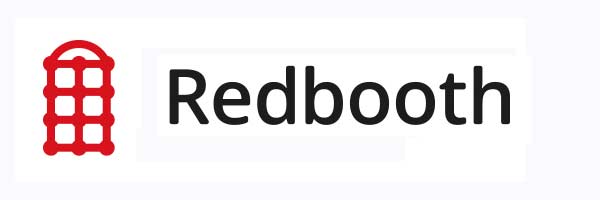
Redbooth : A good and pretty easy-to-use software for students who are looking forward to manage their projects, Redbooth is a platform for communication and collaboration with instant messaging and video-chat for a swifter communication among project team members. Moreover, the well-organized file-management offer with a centralized file location and integrations are add-on benefits. Redbooth also offer mobile tools to get access to files and projects anytime and offers a Free Plan with 5GB storage and 5 users.
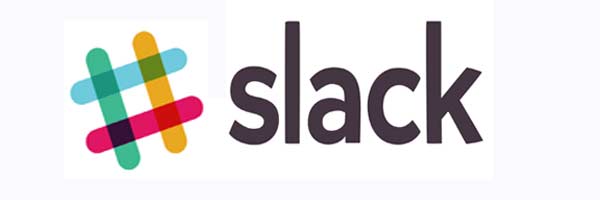
Slack : Another very interesting software for students involved in group projects is Slack which comprises of 3 main features- direct messages, channels defined with a hashtag and private groups. Plus, various other features like Google Drive integration, Dropbox, file sharing, open groups make it a popular software for students for better management of projects. Really easy-to-use, one can just start with the software instantly without spending much time in the learning process.
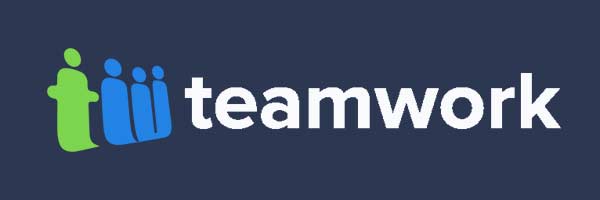
Teamwork : Collaborate and share among project team members with much ease using Teamwork that allows a lot of integration tools like Google Drive for easy storing and sharing of documents and any information. Besides, the central file management system let students to upload and store documents within the personal account. One striking feature of this software for students for project management is that the pricing is based on the storage space opted and the number of projects.
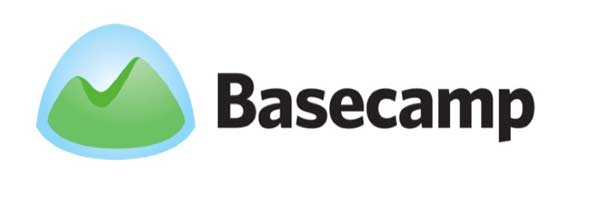
Basecamp : One of the prime factor that makes Basecamp a good option as a software for students dealing with a project in a team is its Progress window that allows to track the works that’s already done. A very nicely documented team management app, Basecamp lets you restore anything that you accidentally delete from the software.

Glasscubes : Any project team with members of five or less, Glasscubes is one of the best options at hand. Options of unlimited projects and a storage of 1GB, this software for students looking forward to project management allows to take part to discussions and create new tasks without even logging to the system. There is a whiteboard feature that lets any member of the project group to add or edit any added document in the system.
8 Tips to Teach Effectively in Class
What makes a great teacher? Well, there are no hard and fast rules to make a great teacher and different approach towards teaching works for different people. Some teachers are in favor of showering praise to students to motivate them to work harder; while some considers praise to be causing harm to a child’s learning process. Telling your students what to do does not alone, means teaching. It’s more than that! Today, we bring to you some ideas that might assist you in your effort to make your teaching more effective in the classroom.
It’s all about passion!
What differentiates a good teacher from a great one is the passion for teaching. And the passion has to be genuine. Faking the passion would lead to nowhere. It is believed that students can get along easily with a teacher they think care about what they are teaching.
Know your students well; just like you know your subject.
Knowing your subject isn’t enough to make you a great teacher. Know the people you are teaching- what all they like in what you teach, their requirements and what they need to learn from you. Teachers should not get lost in the very important step towards effective teaching, i.e. know your students well.
Create a safe and better learning environment for your students.
Promising a secure environment for your students is important, to let them acknowledge what they don’t know and allow them to learn things. You, as a teacher, can create a safe and secure environment which will allow your students to take the risk to learn. Simple things like decorating classroom walls with students’ works can develop the faith in students for their teacher.
A good teacher-student relationship is crucial.
A very obvious step to follow. Make all effort to build up a strong relation with your students and it definitely has a lot to affect learning in classroom. Good environment in classroom with a thriving teacher-student relationship is a sign of a progressive classroom.
Keep your teaching CLEAR.
A great teacher can also be categorized as the one who has the ability to simplify complex learning into something that’s easily graspable to students. The biggest problem with most teachers is that they fail to realize if students understand them or not. Keeping the learning method simple and clear is important.
Be an amazing behavior manager.
Good knowledge about your subject and how you deliver it in class alone doesn’t make you a great teacher. Managing classroom behavior includes managing students behavior in the class, proper usage of lesson time and optimal management of learning resources. All these points are as important as your knowledge in the subject you teach.
A good teacher-parent and teacher-colleague relationship is also important.
Just as you need a good relationship between you and your students to build up, an equally good relationship is required on the professional front too. Timely communication with parents, being supportive to colleagues equally affect student learning. How? Good relation with colleagues can open up new teaching methods. Whilst, communicating with parents is highly important for a student’s overall development.
Be open to new learning styles.
A lot of teachers have the opinion that each student is comfortable with their own style of learning and it’s always better to encourage them to learn in their preferred style. Moreover, being a teacher, you have to keep updated about the latest teaching styles that can optimize the learning process.
10 Online Tools to Engage Students in Studying Process
When a teacher manages to engage his students in the learning process through interactive techniques, they are able to increase their focus and improve their critical thinking skills. Active participation is important for students to gain meaningful learning experiences in the classroom.
How do you motivate your students to get engaged, when most of them don’t give you a chance to show how fun learning can be? The following online tools will support you on that mission!
How-To-Study.com
This website will be a faithful companion throughout your growth as an educator. It offers effective study tips and articles that help students improve their learning skills. In addition, you will find a separate section for teachers, which offers over 200 free tips provided by experienced educators. New content is being added on regular basis, so make sure to stay updated with the trends.
The teaching resources are separated in the following categories: Reference Sources, Classroom Management, Teaching Techniques, Subject Areas, Language Arts, Math, and Other Teaching Tips. When you start exploring the content at this website, you’ll realize that your potential as a teacher is directly related to the engagement of your students.
ExamTime
Teachers have a great responsibility to provide proper support during exam sessions. You cannot expect for your students to study effectively if you solely provide the textbooks and leave them on their own. Luckily, those teaching strategies are outdated.
ExamTime is a tool you can recommend to your students. It transforms their learning potential by enabling them to organize the studying process and focus on the most important aspects of the material. The free learning platform provides all tools that students need for successful learning.
4Tests
How can you make tests less scary? By enabling your students to practice as much as possible. You don’t have to give tests each day until you make them feel more comfortable with the challenge; that would only increase the stress levels in the classroom.
At 4Tests.com, your students can take free practice exams with no pressure. You won’t be aware of the results they achieve, so they will be intrigued to test their knowledge and see how well they would do on an actual test.
Novel Guide
If you don’t have time to write novel guides for your students, you will definitely appreciate this website, which offer materials on most literature pieces you cover in class. In addition to a plot summary, the website offers discussion and questions for each piece of literature.
When your students rely on these resources, they won’t neglect the actual novels. On the contrary; they will get proper guidance on how to read and understand the author.
Essay Mama
The essay writing assignments are among the most challenging projects your students face throughout their learning adventure. No matter how hard you try to engage them in the process of academic writing, it’s hard to make all topics attractive. Essay Mama is a website that offers professional assistance on all types of assignments. Your students can collaborate with expert PhD authors, who will guide them through the essay writing stages.
The blog section is just as useful for you as it is for your students. It offers a detailed glossary of essay writing terms, as well as a free academic writing guide. In addition, you can read great articles related to education.
myHomework
Your students love using their smartphones and tablets, so you should definitely instruct them to install this cross-platform student planner. The paper planner is not as effective as it used to be. With this app, your students won’t need to worry about forgetting the planner or carrying it around everywhere they go.
The app makes tracking school work as easy as it gets. Thanks to myHomework, they will never forget an assignment again.
StudyBlue
Most conventional learning strategies are outdated for today’s educational system, but that’s not the case with flashcards, review sheets and quizzes. These tools are still effective when it comes to getting the students engaged in the learning process. The free platform offers the largest library of online study materials generated by users.
Your students can find resources on any topic and save a lot of time when they are trying to learn new things.
Fun Brain
What could possibly inspire your students more than properly-chosen educational games? At this website, you will find great games for different ages. The reading section contains books and comics that will bring literature closer to the understanding of young learners. The fun math games will make even the scariest subject more approachable.
ACCA Student Blog
Unfortunately, you don’t have much time for motivational speeches when you have tons of coursework material to cover in class. That’s why the ACCA blog can help! Recommend this website when you notice that some of your students have lost their passion for learning. The motivational resources will help them achieve their full potential, find the right learning methods, surpass different obstacles, and deal with exam failure.
Study Guides and Strategies
“Study is like the heaven’s glorious sun.” This Shakespeare quote is the motto of the website, which offers useful study guides, project management and problem solving strategies, teamwork tips, thinking/memorizing guidance, research and reading tips, and much more.
The guides for learning and studying are very effective for students at different age levels. They will find tips on active learning as an experiential, engaging, and mindful way of processing information.
5 Good Practices for Successful ERP Implementation in Educational Institution
ERP implementation is now a crucial part of effective management of educational institution. All concerns right from the management of finance to attendance to exam to publish of results, can be a lot easier with the adoption of right ERP software. The education environment is changing; at a faster pace; new and advanced methods of learning have replaced the traditional forms. To keep up with the changing face of education, institutions have to be smart with the management part as well.
Opting for ERP implementation is a major undertaking and it just not ends with purchasing of the ERP software. Choosing the right ERP solution to planning and execution- everything has to be in the right place for a rewarding experience at the end. A well designed ERP implementation plan is the key. Here are the best practices:
Review the pre-installation scenarios. Do you at all need an ERP for your school?
ERP implementation should not be a decision in haste. Make sure you have enough knowledge about the benefits you’re going to get with an ERP implementation in your educational institution. It’s advisable to create a team with some teachers and non-teaching administrators who’ll be the end -users, to develop the objectives and chart out the entire plan. A complete analysis of the processes to be automated, the scope of implementation and well-defined objectives will surely pave way for a smooth implementation process.
What are your requirements? Choose an ERP software accordingly.
The functions of an ERP software is extensive; and there are a various types of ERP softwares available in the market. Before deciding on any ERP software, dedicate some days in intensive research of the various softwares available and match them with your requirements. Perhaps, the greatest reason for failure of ERP implementation is disparity between the capabilities of an ERP software and the institution’s processes and requirements. Perfect coordination between these two, can produce optimal results.
The ERP Implementation Steps
Once you are done with the process of buying the ERP software, then comes the implementation stage. The practices to follow are:
Create the database. Collect and store all necessary data.
Keep in mind: You cannot transfer or convert 100% data as there will be some really old and insignificant ones. A complete analysis of the currently available data has to be done to determine the important data to be included in the database. Create a spreadsheet/CSV file to properly segment and store data. A good ERP will allow an easy transfer or upload of data from spreadsheet to the database. Make sure all data transferred to the database is accurate and complete.
Training- An important step to successful ERP implementation
A very crucial step to ERP implementation, training of the staffs in the institution who’re going to use it is necessary to realize all the benefits of an ERP software. If the end-users don’t understand how the system works, the entire purpose of an ERP usage will go in vain. Training documents or any other additional tools required, must be provided to the team getting trained. Usually, the training part comes clubbed with the ERP from the provider. Once the training gets over, a pilot-run of the software in the institute with real data to consider any adjustments is needed.
Go live!
Perhaps, the most satisfying part of an ERP implementation process, going live on the system without any hiccups is always most welcoming. But going live shouldn’t overshadow an important aspect- post implementation matters. Proper utilization of the software and timely maintenance and upgradation are equally important as the ERP implementation.
Adopting the best practices for ERP implementation should be priority for the optimal utilization of an ERP software. If you are looking out for some helpful tips for successful ERP implementation in your institution, we have a write-up for you. Read here.
26 Effective Ways to use Twitter for Teachers & Educators
Teachers & Educators in the present fast-paced, ever evolving world of communication are presented with a plethora of options which might sometimes be overwhelming. To reduce the efforts of teachers in learning a new form of communication, we give you some of the most effective ways of using the most modern form of communication, Twitter.
Share this Image On Your Site
Technology in Schools: What are the Opportunities and Challenges
See around and you find how technology has changed the way life is today. The same is with technology in schools- it has opened up a lot of opportunities for sure. The adoption of technology in schools has a different picture to offer in different countries. While some developed countries like the United States are looking for more technology to integrate in their schools, countries from the lesser developed parts of the world are still struggling with how to integrate technology in schools. While, there are lot of opportunities that technology has to offer to education institutions at all stages, there are some shortcomings that’s preventing widespread acceptance of technology in schools all over the world.
Opportunities are wide for technology in schools
When you talk about the opportunities for integrating technology in schools, we can actually see how technology is already transforming the way teachers teach in schools- a drift from text-based learning to something that would involve and engage students in the best possible way. Opportunities are plenty; here, we talk about four such opportunities that have every potential to take education to the next level.
- A global learning platform is surely one blessing bestowed with the introduction of technology in schools. Students can opt to learn foreign language from natives of the particular country through videoconferencing. A lot of websites have come up with this kind of learning sessions via video conferencing call, letting students experience educational benefits minus the travel cost involved.
- A paperless classroom is on the way. Cloud-based apps and tools like Google Drive, Gmail, Google Docs have a smarter way to offer to students and teachers to carry on their daily classroom learning. A definitely affordable option to save more time than the traditional methods of classroom teaching.
- A great opportunity for technology in schools lies in the form of virtual reality (put the backlink to our blog)in classroom. Virtual reality has the power to transform classroom into a practical field for students to experience real life applications in a virtual world.
- E-books have huge potential to change the face of education in the coming days. A lot of schools from different parts of the world have already discovered the huge potential of e-books, yet, some schools remains unaware.
There are challenges too!
The introduction of technology in schools is surely not an easy road to success. It has its share of bad patches which are to be met with.
- Coming out of the comfort zone and accepting technology in schools is perhaps one of the biggest challenge to face with. Most of the times, teachers and school authorities are reluctant to experiment with new technologies in classroom, for they consider these experimentations are beyond their job descriptions.
- Technology in schools has another setback- most schools are hesitant to implement distance courses, unlike the universities who have already joined the bandwagon of online courses.
- The costing factor is always a prominent challenge for the adoption of technology in schools. Most schools do not have the funding to support the use of technology in schools. There is an initial cost involved in the purchasing and installation of technology. Moreover, the cost of maintenance, upkeep and upgradation involves an ongoing cost, which is, at times, financially unsustainable for most K-12 schools.
There are challenges to face; but the biggest test is to face these challenges, overcome and accept technology in schools and revolutionize education with improved opportunities for students.
Online Collaboration in E-learning: Tips and Tools
All around the globe we are witnessing a transition towards collaborative learning. Our idea of collaborative learning arises from problem-based, case-based learning, team work, discussions, and other ways in which student is an active part in the learning process. Communities, also known as the wave of the future, are one of the top three most important components of e-Learning portals. This post will tell you about the ten tips for using collaboration tools in e-Learning.
The benefits of collaborative learning are immense. It lets the learners gain from the experience of their peers and help them acquire and retain information in a more involved and engaged way. Therefore collaboration tools deserve special attention as an e-learning professional. But how do you use them?
The first requirement is to put focus on usability and accessibility when making the choice of collaboration tools for your eLearning course. In addition, you should also consider how the collaboration tool will serve your learning goals. In ideal conditions, your collaboration tool should be user friendly and can be accessed from a number of smart devices, which includes mobile phones and tablets.
- In order to motivate learners for using collaboration tools, the learners must always be made aware of the benefits associated with them. Without this awareness they won’t see any real value in using collaboration tools.
- If there are any current activities in your eLearning course that can go through some improvisation using the collaboration tools then do so.
- Whenever you perform any collaborative activity, it is necessary to understand that smooth working depends on the clarity of instructions and objectives. As an instructor, you need to explain the purpose of the activity, and other necessary instructions should be delivered in a very clear and concise manner.
- Instructors should perform activities which are relevant and specific to the topic. Stuffing these activities with general information will make students lose interest and get bored. Infuse life in the activities through improving engagement, and relate with real life examples will invoke a much better response from the students.
Choosing the right tools for Online Collaboration Tools
For ensuring the best e-learning, it’s necessary to choose the best online collaboration tools. Here are some of the best tools that enable smooth collaboration amongst learners:
![]()
MindMeister
This is a web based tool that makes it possible for groups to do planning or brainstorming during the early phases of collaboration. It offers mind map, various templates, SWOT analysis and project planning for collaborating during the course of a project as per the nature of their assignment. With live chat feature, it can offer direct and fast communication. You can also use MindMeister asynchronously.
Uzity
Uzity Learning Management System is the easy-to-use, and powerful online learning platform for education and online training. It offers interactive, engaging, and connected learning experience for all learners and instructors in your organization. By using Uzity, the instructor can deliver material to the students, administer tests and other assignments, track student progress, and manage record-keeping. It fits everywhere whether it is the classroom, in the workplace or at home.

ProofHub
ProofHub is an online collaboration software that helps organizations improve communication and collaboration among distantly located members in learning projects. Using the features of ProofHub, one can communicate through group chat, raise issues and these get resolved without wasting much time. This rapid communication ensures that all the members are at the same page in a learning project.
Sharing of files, documents and information becomes an effortless affair with ProofHub. Through Notes functionality, group members can collaborate and write some amazing content together. Sharing of ideas becomes very easy with ProofHub. The software takes care of the mobile world as it lets you connect with your projects on the go from their mobile. This way missing or delaying of tasks can be significantly reduced.
SlideRocket
SlideRocket deserves special mention as it lets people create attractive and engaging presentations through its web based tools and features that can be accessed from anywhere. A single document can be accessed and modified by different members in a learning group. These random URL can be generated against each document which can be be submitted to an instructor for easy viewing. All multimedia features can be embedded in a presentation. You can pull data in real time from Google Spreadsheets, Twitter live feeds and Yahoo. It also offers you analytics feature which helps measure a presentation’s effectiveness. You can find through analytics about the audience who viewed it and their actions that followed.
Google Docs
Google Docs is one of the most popular and common online collaboration tools available today. Whether you want to create documents, powerpoint presentations or spreadsheets, Google Docs offer all these facilities. Due to its always connected feature, one can write, edit, and collaborate upon these documents from any remote location at any time and from various devices. Google docs automatically save the changes being made to the documents and it also keeps the previous versions of the doc in case you want to revert back. By referring revision history of a document, its old versions can be seen and can be sorted by date. Chat and commenting options are also there.
E learning is the order of the day and it’s going to grow in a bigger way in the future. The benefits are not limited to students. It’s advantages extend to a larger section of society, including the working population. Job oriented courses help you acquire new skills that make you more employable. If you want to be a significant part of this revolution then effective online collaboration is the key to it.
The article is written by:
Saurabh Tyagi is a career author with niche in the upcoming technologies like Edtech, Big Data and Social Media. His article range from general career advice to expert opinion like the one above. These resources are useful for all sorts of professionals right from those searching for resume samples for freshers to experienced professionals at higher level.
10 Smart Technology Tools for Teachers

Technology and education are connected to each other, in a way that makes education and learning more engaging and fun. Smart technology for teachers are available to shape the way children learn, in a better way. Today, we talk about 10 such technologies that teachers can utilize in classroom to optimize the learning process.
- Khan Academy: Technology resources for teachers definitely includes Khan Academy which offers excellent collection on various subjects like maths, science subjects; lectures on finance subjects as well as quizzes to carry out normal classroom activities.

- Quora: Quora has been in use widely for quite a number of purposes and it can be one of the best technology tools for teachers and educators. A nice medium to get the students engaged in a discussion on education topics or get their doubts cleared by posting questions in quora.
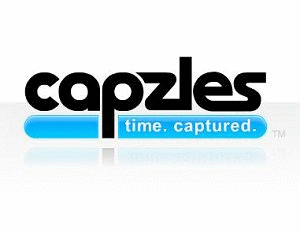
- Capzles: Capzles allow you to gather videos, photos, blog posts and documents in one place. Teachers can use it for conducting online projects and for classroom learning as well. Explore and use Capzles for different ways in the classroom.

- Google Docs: Google docs is an effective technology for teachers in the classroom. Educators can create feedback forms for projects done by students. Moreover, creating and sharing documents, spreadsheets, presentations between the teacher and students in the classroom is swift with Google Docs.
- Evernote: Evernote allow its users to be well-organized; capture and store photos, ideas, recordings or anything else and get access to it anytime, anywhere. Perfect for lesson-planning.
- Socrative: Encourage students in various exercises and games through this student response system called Socrative. Available in tablets, computers as well as mobile, this tool let teachers get access through students progress and grades also.

- YouTube: YouTube contains lot of important study materials that can be utilized in the classroom to optimize learning. YouTube also has a special section for education as well. Some restrictions and students can make the most out of YouTube without getting distracted.
- Dropbox: One of the best technology resources for teachers to store, get access and share any kind of data from anywhere, Dropbox is free and easy-to-use.
- Twitter: Twitter has a lot to offer to educators- letting teachers get connected with their counterparts from different parts of the world and talk about teaching methods, share their ideas and use it in classroom to connect with students.
- SlideShare: Uploading presentations, video projects and any other documents is pretty easy with SlideShare. Share with students and also, ask students to upload their classroom projects and presentations.
6 Important Features of a School ERP to Look out for

According to a statistical report published by NASACT’s 2012 “Challenge of Change” and GFOA’s “Real Impact of ERP Systems in Public Sector”, on the shortcomings of ERP implementation, 60% of organizations under the survey reported disappointment with their ERP system*
Features of a good School ERP
Choosing an ERP for education institution is not easy and should not be done in a haste. Proper research work on the characteristics is important before taking the next step. We bring to you 6 important points to look out for in a school ERP.
- A good ERP should be complete: Now, what do you mean by a ‘complete’ ERP system? First of all, you should be sure of all the requirements you have from an ERP system for your institution. An all-inclusive ERP system for an education system should be able to take charge of almost all of the functions of an institution. If an ERP is not able to fulfill the required promises and most of the functions has to be done manually, it’s surely a big ‘no-no’ for this kind of ERP in school.
- Scalability: Most educational institutions cannot afford constant upgradation of the software. ERP in schools must be scalable and can be scaled up or down according to the demands of the institution.
- A stable support system: While choosing a school erp, it’s highly important that the ERP provider company assures a good support system, mainly after the system is successfully installed in the institution. Constant upgradation and the timely updates are what makes part of a good support system.
- Easy to adapt: The report by GFOA and NASACT, 2012 on the pain points of ERP implementation says that 62% of end-users had problem with adoption of the software and usage. An ideal ERP should be easily adaptable to the end-users. School authorities or administrators might not be highly fluent in the technical front and hence, complicated systems will come with the unfamiliarity and uncomfortability quotient with them.
- Cost-effective and ROI benefits: The cost of erp in schools is not just about the purchasing and implementation cost, but it also includes the expenses in future for maintenance, upgradation, etc. An ERP system should offer a very clear picture of the expenses involved, minus any hidden cost which affects the targeted ROI of the institution.
- A widely accepted school ERP: A widely accepted ERP would ensure adequate resources for implementation and support. Certified customers and partners stand as a guarantee for its authenticity and thus, offers maximum effective use. The more the number of customers, the greater the chances of effectiveness of the ERP.
There are quite a number of names in the industry to lure you with great offers and perks. But when it comes to your education institution, you shouldn’t take chances and a proper research work is always recommended. Always go for an ERP in school that consummate your institution’s needs and essentials.
Is Online Learning platform Catchy Enough to Replace the Classroom?
In an era where most toddlers are comfortable with a smartphone as with crayon, it would be foolish to think that the traditional model of education will survive as is. Innovation demands constant change, most of which is evident in the methodologies of higher education.
To cut to the quick, online learning platform has become quite popular with the masses. Therefore with Uzity learning management system, the teaching and learning is become easy and convenient. Using Uzity, instructor can easily deliver material to the students, administer tests and other assignments, track student progress, and manage record-keeping. So get ready to build your own alliance to deliver the amazing learning experience. However, the debatable question here is – How much disruption from the classroom-model can we expect from online education? Delving into the details later, it can be simply put that traditional methods of teaching are on the cusp of a dramatic transformation.
The Benefits as We Know it
Online platforms, especially social media websites, have empowered us to replace many customarily interactive processes like dating, shopping, and banking. Getting educated online is probably the next frontier for internet-based expediency. Here is why:
- You can afford it: Online learning requires no cost to self. More than 300 hours of lectures from Harvard, Berkeley, and MIT are available on Youtube. This medium of imparting education is more scalable due to its reduced overhead costs as opposed to the brick-and-mortar schools.
- It is convenient: You can take an online course any time of the day, at your own convenience. Most of the distance learning programs have online communities and forums that increase accessibility and usability.
- You know where to find it: The courses are available online; so all you need to have is a good internet connection. MOOCs (massive open online courses) are readily accessible to a diverse blend of student backgrounds, experiences, geographies, and motivations.
- Controlled learning: With online learning you have more flexibility to choose the where, what, when, how, and how much of education that you acquire. Students could choose EdX MOOCs for a variety of different reasons. Some are simply hoping to learn, some are looking for knowledge to aid in some other classes that they are taking, while others are probably teachers looking to gain some quality insights about the latest in the field of teaching.
- Prepare for the future: In terms of employment, recruiters today prefer candidates who are well-versed with the detailed nuances of dynamic learning. Since online learning is implemented as a training tool in organizations, it’s best that you sample its worth for a clear path ahead.
Innovation Vs Tradition
Just like some people can never get over the feel of a hard-bound book, many learners continue to prefer the face-to-face, teacher-led interaction of the traditional classroom setting. Although, loyalty and adherence to age-old practices could retain a certain fragment of the student population, a failure in integrating technology and education could prove detrimental to an educational institution’s sustainability.
As we all know, schools have always been the centers of tradition and innovation. Although teachers are likely to blend the practices of both online and in-person learning, ultimately it’s up to the innovators and the preferences of the learners to obtain knowledge from any medium of choice.
Competition in the online learning space is fierce, with innovators encouraging trials and errors to transform the educational process. Here are some trends that could possibly tip the balance in near future:
- Wearable gadgets: This includes devices like google glass, smart watch, etc. which is knowledge in your pocket – on the go.
- BYOD: Exciting as it sounds; BYOD refers to bring your own device. Through this concept, students are permitted to bring their laptops, tablets, etc. in a classroom for the sake of taking notes.
- Sharing Portals: Cloud and social media websites have become common platforms for sharing assignments and other study material. Be it Dropbox, Google drive, or iCloud, sharing massive files is just one click away.
- Blended & Flipped learning: Flipped learning is getting information through an instructional video and then displaying a rendition of your learning through project work. Blended learning on the other hand is a combination of online and classroom teaching.
- Last but not the least, this era is all about the apps! There is an app for learning anything and everything. Be it science or literature, a simple download can go miles in teaching you something constructive in life.
In the end…
While there is improvement and students have begun to adopt online learning on a large scale, education providers still need time to conclude whether students will drift towards the classrooms that keep them in line, or the classrooms that keep them online. Rest assured, this wave of online learning is sure to take the world by storm.
Happy learning!
The article is written by:
Tina Jindal. She is a professional writer who works on a variety of topics like employment, real estate, and education. A staunch supporter of online learning and education, career advisor for naukri.com, she has been involved with renowned publications as well.
The Evolution of Classroom Technology: The Journey from Pen to Keyboard
Education and technology has always been in perfect harmony. Right from the days when chalkboards were invented during the 18th century till the interactive whiteboards started revolutionizing classroom learning, education has gone hand-in-hand with technology. Below find a very interesting infographic, tracking the evolution of technology in classrooms; for it’s not just important to know where the future is heading to in education, the past also matters!
Ancient technology in classroom

1650
Horn Books, wooden paddles with printed lesson was popular during the colonial era, to help students learn verses.

1870
Magic Lantern, the predecessor to slide machines, projected images printed on glass plates in 1870. Public school systems in Chicago started using more than 8000 lanterns by 1915.

1890
Chalkboards and school slates came into use by 1890 followed by pencils in 1900. Wide availability of pencil and paper made school slates obsolete.

1920
A new form of learning evolved with radio on-air classes for students within listening range in the 1920s. Board of Education, New York City broadcasted lessons to schools via a radio station.

1930
1930 and 1940 saw the introduction of overhead projector and ballpoint pen in classroom education.

1972
In 1972 came the Scantron system of testing which allowed teachers and educators to grade exams more effectively and efficiently.
The age of personal computers

1981
Computers came to daily use in the 80’s with the first portable computer was introduced in 1981. During 1984, public schools in U.S had one computer in average for every 92 students.
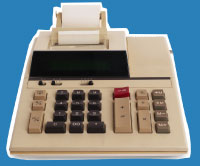
1985
Hand held graphing calculators were introduced in 1985 and it became a great sensation in the field of maths. Year 1985 also saw the CD-ROM Drive coming to use. A single disc could store a whole lot of things like an entire encyclopedia along with video and audio.

1996
The internet, which was by then considered a computer network used mostly by NASA physicists and academics, slowly entered into homes and educational institutions by 1996.

1999
Technology in the classroom reached new heights with interactive whiteboards which blended handwritten notes with interactive technology in 1999. Earlier versions of these whiteboards were connected to desktop computers through wires, whilst the latest ones are compatible with smartphones and tablets.

2007
2007-2010 was the age for smartphones and tablets. The concept of classroom slates got a revamp with iPads which is taking classroom education to new heights.
Classroom technology in the future
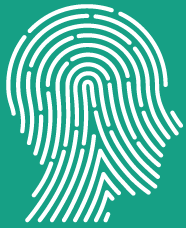
Biometrics, the science that recognizes people on behavioral or physical qualities, is surely the answer to student disposition in the classroom and develop teaching materials accordingly.

Wearable devices in education is the next big thing to watch out. Virtual reality headgears, wristbands, smart watches will take education to the next level.
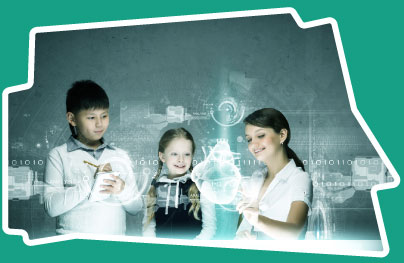
Multi-touch surfaces like desks or workstations can work wonder for students to collaborate with their peers around the world. Videos, online resources and other virtual tools available in the single swipe of the desk.





